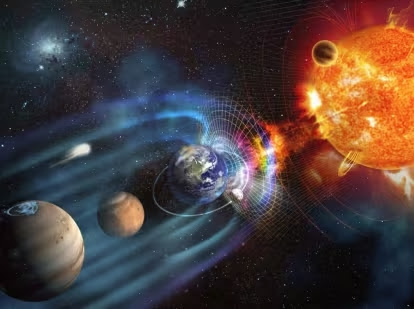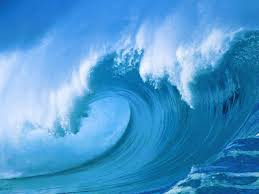Now we have to talk a bit of geophysics, a small part of what is working, that it would be normal to present a geophysical report for a company, I'm talking about cuts geoelectric or geoelectric profiles which are very important in a job geophysical exploration and interpretation because help a lot us when we are working on for minerals or in finding groundwater or in the search for groundwater reservoirs. But how can we use the geoelectric profiles to find what I point?
 |
| Geoelectric profile. |
profiles at the end of the report help us to interpret what we find and express well our findings indicating after our recommendations.
Ok! Geoelectric profiles are a manifestation of the data collected in the field when the inject field by returning a value, which collect and then draw them on logarithmic paper and get our raw data that will later be accommodated or soft for interpretation.
When we want to say that raw data is the data directly collected from the field and the team, and have not been corrected or modified if you have bad data grouped.
This data field will give us an idea of what we found in the basement and that will allow computer programs using our curves soften and then generate our geoelectric profiles.
1. Data obtained from the field using our equipment resistivities.
2. Development of geoelectric curves indicating the number of layers or strata encountered and the resistivities found for that layer or stratum.
3. Materials desktop, like pencils, paper log, etc..
4. Resisitividades table of geological materials, soil and rock types, including minerals.
5. Geological maps of the study area, will help us to get an idea of what we might have in the ground to a certain depth.
After having grouped our SEV start drawing geoelectric profiles.
Firstly, we get a table indicating each SEV our horizons and simultaneously in each horizon to indicate the layer thickness and the resistivity found for that stratum. Once this is done for all SEV proceed to draw.
 First, we draw vertical lines for our SEV 1 SEV SEV 2 and 3 (take these SEV as an example). In these vertical lines will place thicknesses numerical values we found when relizamos our papers logarithmic curves for all horizons found also for each SEV.
First, we draw vertical lines for our SEV 1 SEV SEV 2 and 3 (take these SEV as an example). In these vertical lines will place thicknesses numerical values we found when relizamos our papers logarithmic curves for all horizons found also for each SEV.that software is created for us to save time, but also good to know the method we are using, so in this way it will be easier to develop our interpretations and conclusions.
I offer some special bibliographies that you can use in your geophysical survey.
Of course some videos: Just check out the entry in http://geofisica-guszav.blogspot.com/2011/02/sondaje-electrico-vertical-sev.html
Any suggestions, comments, questions or concerns please cause me to know marvar26@gmail.com






































.jpg)






